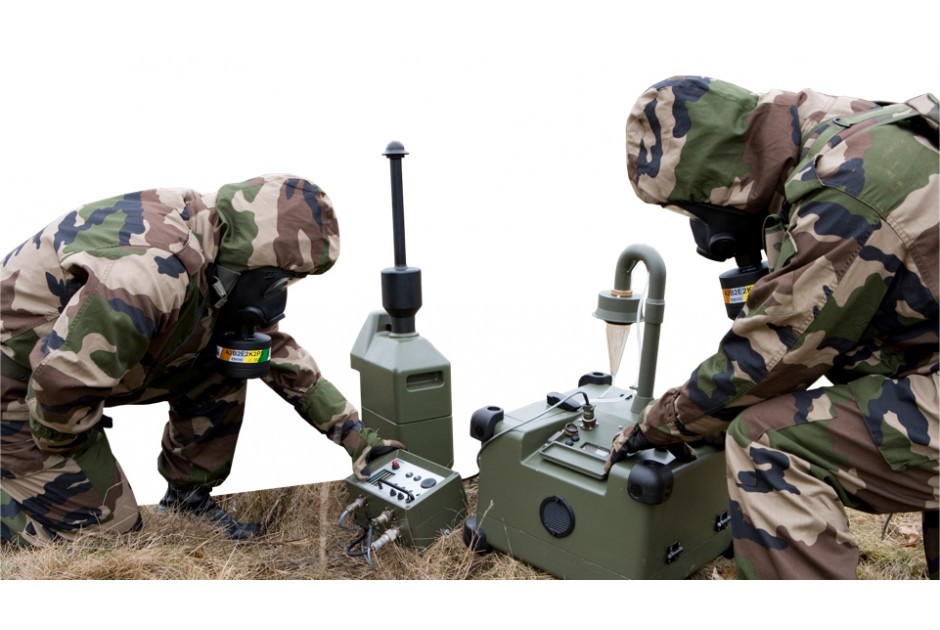ISO 5349 1 Hand arm vibration exposure measurement testing
The ISO 5349 series of standards provides a framework for measuring and assessing the exposure to hand-arm vibrations (HAV) in work environments. This service focuses on the first part, ISO 5349:1 - Measurement of Hand-Arm Vibration Exposure, which is crucial for ensuring compliance with occupational health and safety regulations.
In military applications, where prolonged exposure to vibration can occur during operations or training exercises, this standard plays a vital role in safeguarding the well-being of personnel. The test measures peak acceleration, mean power frequency (MPF), and root-mean-square (RMS) values over specific time intervals. These parameters are critical for understanding the cumulative effects on operators' hands and arms.
The testing process involves equipping subjects with accelerometers placed at strategic points—usually at the base of the thumb, the first metacarpal bone, or the proximal phalanx of the index finger. The accelerometers capture data during typical military tasks such as using heavy machinery, driving vehicles, or operating handheld equipment.
For accurate measurement, each test session lasts for a minimum duration of 15 minutes but can extend up to several hours depending on the activity profile. The data collected is analyzed to determine compliance with the occupational exposure limit (OEL) specified in ISO 5349:1-2017.
The standard defines the OEL for HAV as follows:
- 8-hour Time Weighted Average (TWA): 5 m/s²
- 15-minute Peak: 20 m/s²
This testing service ensures that military personnel are not exposed to levels of vibration that could lead to long-term health issues such as hand-arm vibration syndrome (HAVS). By adhering to these standards, organizations can mitigate risks and maintain a safe working environment.
The test results provide detailed reports that include:
- Peak acceleration measurements
- Mean power frequency analysis
- RMS values over the specified time periods
- Evaluation against OELs
The data from these tests can be used to inform ergonomic design improvements, such as modifying equipment handles or introducing vibration-dampening materials. This proactive approach not only enhances operator comfort but also contributes to overall operational efficiency by reducing the likelihood of workplace injuries.
Applied Standards
The ISO 5349:1 standard is widely recognized and applied in various sectors, including military testing. The application of this standard ensures consistency and reliability across different environments. It is particularly relevant for industries where workers are exposed to high levels of vibration, such as:
- Construction
- Mining
- Railroad operations
- Military personnel handling heavy equipment and vehicles
The standard is also referenced in other international standards, such as:
- ASTM F2781-19 - Standard Practice for Evaluation of Hand-Arm Vibration Exposure
- EN ISO 5349:1 - Measurement of Hand-Arm Vibration Exposure
- IEC 60804 - Electrical Machinery for General Purposes
The use of these standards ensures that testing methodologies are consistent and comparable across different regions, facilitating global compliance.
International Acceptance and Recognition
The ISO 5349:1 standard is highly regarded internationally due to its rigorous methodology and broad applicability. Many countries have adopted this standard as part of their occupational health and safety regulations. For instance, the United States Occupational Safety and Health Administration (OSHA) has incorporated provisions from this standard into its guidelines for protecting workers against HAV.
Other nations like the European Union, Canada, Australia, and New Zealand have also embraced ISO 5349:1 as a benchmark for assessing vibration exposure. This widespread acceptance underscores the importance of adhering to these standards in ensuring occupational safety and health.
The recognition of this standard by international bodies such as the International Labour Organization (ILO) adds credibility to its application across diverse industries. Compliance with ISO 5349:1 not only protects workers but also enhances a company's reputation for being socially responsible and committed to safety practices.
Competitive Advantage and Market Impact
Adhering to the ISO 5349:1 standard can significantly enhance an organization's competitive position in several ways:
- Enhanced Worker Safety: By reducing HAV exposure, organizations demonstrate a commitment to employee well-being, which can improve morale and retention.
- Better Compliance: Organizations that comply with international standards are better positioned to avoid legal issues and penalties associated with non-compliance.
- Innovation Opportunities: The insights gained from testing can drive innovation in equipment design, leading to safer and more efficient tools for military personnel.
- Market Differentiation: Demonstrating compliance with ISO 5349:1 can set a company apart from its competitors, especially when bidding on contracts that emphasize safety and health.
In the competitive landscape of military equipment manufacturing, where quality and safety are paramount, adherence to this standard is not just a compliance requirement but a strategic advantage. It ensures that products meet or exceed international standards, thereby gaining trust from both internal stakeholders and external customers.





